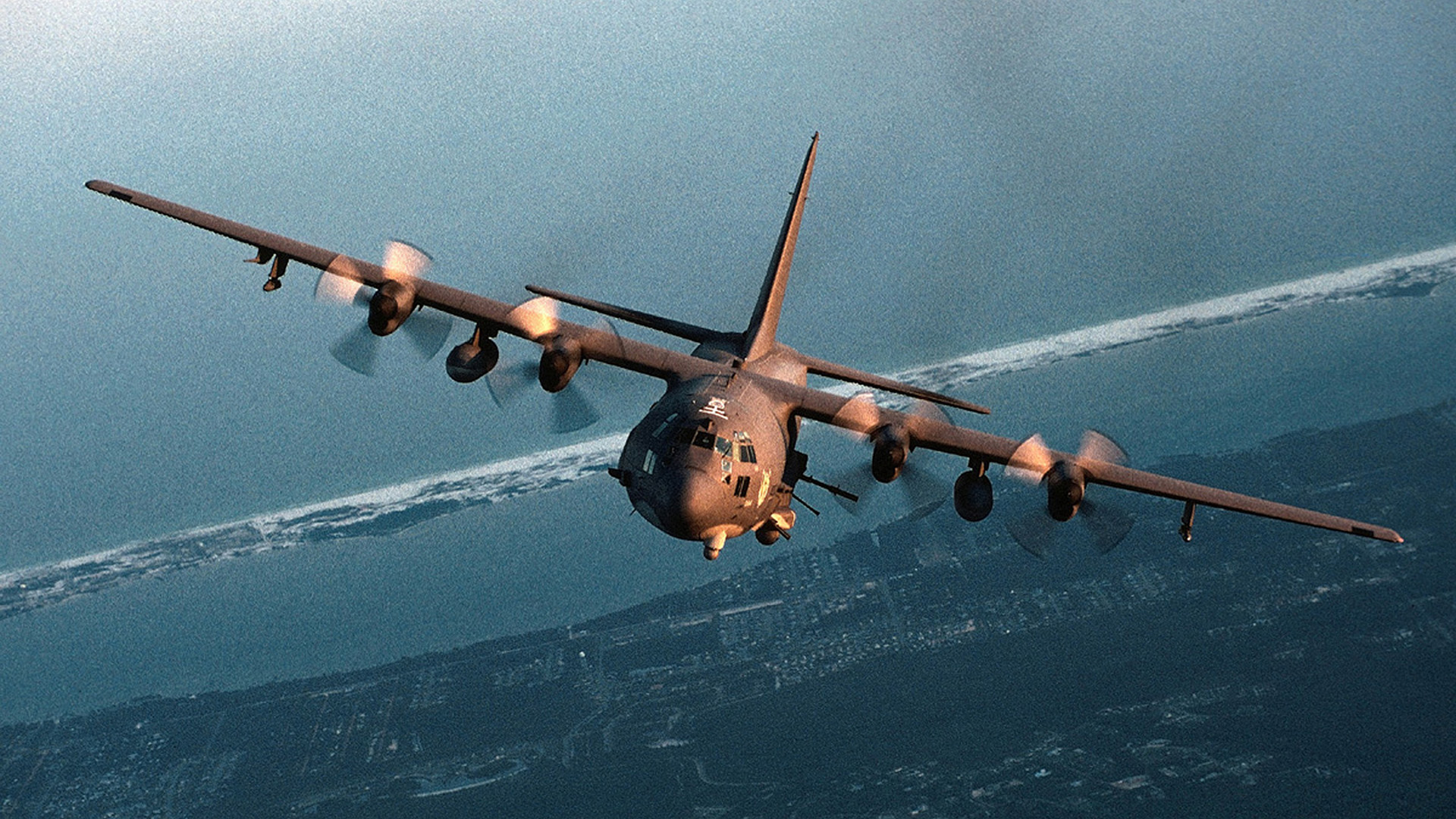

An Air Force AC-130 gunship destroyed a truck on Tuesday in Western Iraq after the aircraft’s crew watched Iranian-backed militia fighters use the vehicle to launch a ballistic missile attack on U.S. troops, injuring eight Americans, defense officials said.
“Immediately following the attack, a U.S. military AC-130 aircraft in the area conducted a self-defense strike against an Iranian-backed militia vehicle and a number of Iranian-backed militia personnel involved in this attack,” according to U.S. Central Command, or CENTCOM. “This self-defense strike resulted in several enemy casualties.”
The AC-130 was airborne at the time of the attack on Al Asad Air Base and the airmen aboard were able to determine the launch point of a “close-range ballistic missile” that struck the base, Deputy Pentagon Press Secretary Sabrina Singh said on Tuesday.
“They were able to take action because they saw the militants,” Sigh told reporters during a Pentagon news conference. “They were able to keep an eye on the movement of these militants as they moved into their vehicles. That’s why they were able to respond.”
Subscribe to Task & Purpose Today. Get the latest military news and culture in your inbox daily.
The AC-130 strike took place between Al Asad and Ramadi, Iraq, a defense official told Task & Purpose on Tuesday.
Singh described the injuries that U.S. forces sustained in the ballistic missile attack as “non-serious.”
U.S. military officials did not immediately specify how many Iranian-backed militia fighters were killed by the AC-130 strike or which Iranian-backed militia they believe carried out the attack on Al Asad.
In an unusual twist, the AC-130 appeared to be flying with its transponder turned on, allowing flight tracking website like FlightRadar24 to follow its precise path during the mission. Virtually all commercial aircraft across the globe fly with a transponder, a radio beacon which broadcasts their exact position and speed to air traffic control systems.
U.S. military planes also fly with transponders while on routine flights, but routinely turn them off in warzones and during other sensitive flights.
Singh was unable to say why the AC-130 had its transponder turned on during the strike, allowing flight trackers to follow the aircraft’s movements in real time.
American government officials have warned that Iran is using its proxies to widen the conflict between Israel and Hamas by targeting American service members in the Middle East.
U.S. troops in both Iraq and Syria have been attacked 66 times since Oct. 17 – 32 attacks in Iraq and another 34 in Syria, Singh said. About 62 U.S. troops had been injured prior to Tuesday’s attack. The most recently injured American personnel are still being evaluated.
Tuesday marked the first time since Oct. 17 that U.S. troops in Iraq or Syria had been attacked by a ballistic missile, Singh said.
Singh did not have any information about what type of ballistic missile the Iranian-backed militia fighters launched at Al Asad but the attack comes roughly two weeks after the Islamic Resistance in Iraq group claimed that it had a medium-range ballistic missile named the “al-Aqsa 1.”
“It has fins and finlets that look similar but not the same as the Fateh-110 short-range ballistic missile, and that has the range of about 250 to 300 kilometers, said Behnam Ben Taleblu, an Iran expert at the Foundation for the Defense of Democracies think tank in Washington, D.C.
The munition also appears similar to an Iranian close-range ballistic missile that has a maximum range of 120 kilometers, Taleblu told Task & Purpose on Tuesday.
Taleblu noted that this is the first time since Oct. 17 that the U.S. military has struck an Iranian-backed militia group inside Iraq.
But unlike the three airstrikes in Syria that the United States has launched in recent weeks, the AC-130 strike was a direct response to an attack against American forces, Singh told reporters.
“We have had other cases where we have responded in retaliation when we were able to identify the point of origin,” Singh said.
Singh had no information on Tuesday about how many other times U.S. troops in Iraq or Syria have returned fire after coming under attack.
When asked if the Pentagon had ruled out launching preemptive strikes against Iranian-backed militia groups in Iraq to prevent further attacks, Singh said that all options are on the table.
“That’s something that is a decision that the secretary [of defense] makes and recommends to the president, who, of course ,makes the ultimate decision,” Singh said, “We have a range of options. We know that, of course, these groups have targeted our forces in both Iraq and Syria. We feel right now that we have taken appropriate action to decimate some of their facilities and some of their weapons. But, again,we always reserve the right to respond at a time and place of our choosing.”
UPDATE: 11/21/2023; this story has been extensively updated with information from Deputy Pentagon Press Secretary Sabrina Singh and Behnam Ben Taleblu of the Foundation for the Defense of Democracies think tank.
The latest on Task & Purpose
- Marine recruit almost shot a perfect marksmanship score at boot camp
- ‘F—k you, I don’t know’: Marine vet Adam Driver delivers lance corporal salute during Q&A
- Army corrects records of Black ‘Buffalo Soldiers’ hanged by US in 1917
- Navy SEAL investigated for alleged ties to extremists
- Five 160th SOAR Nightstalkers killed in training crash identified